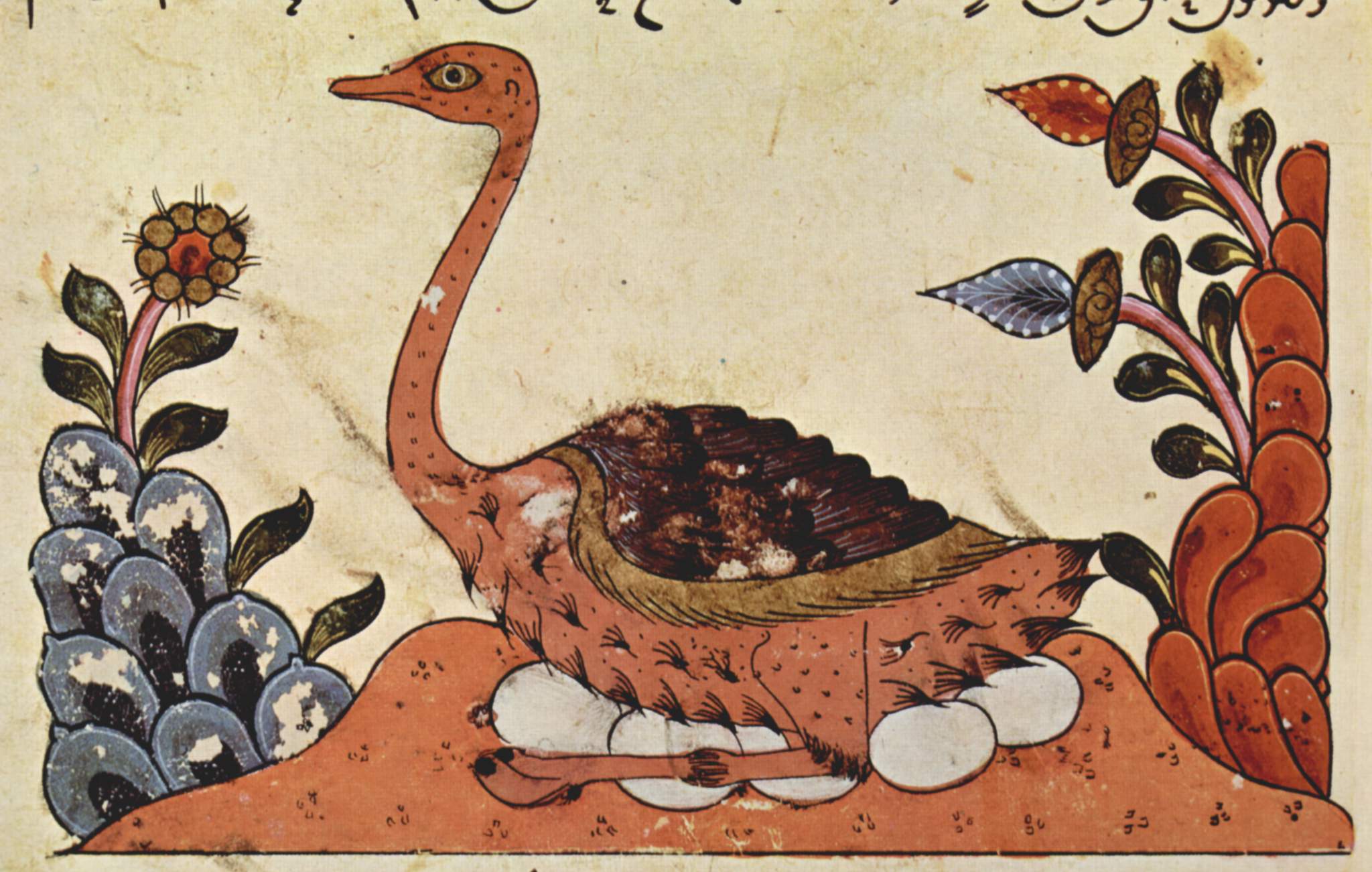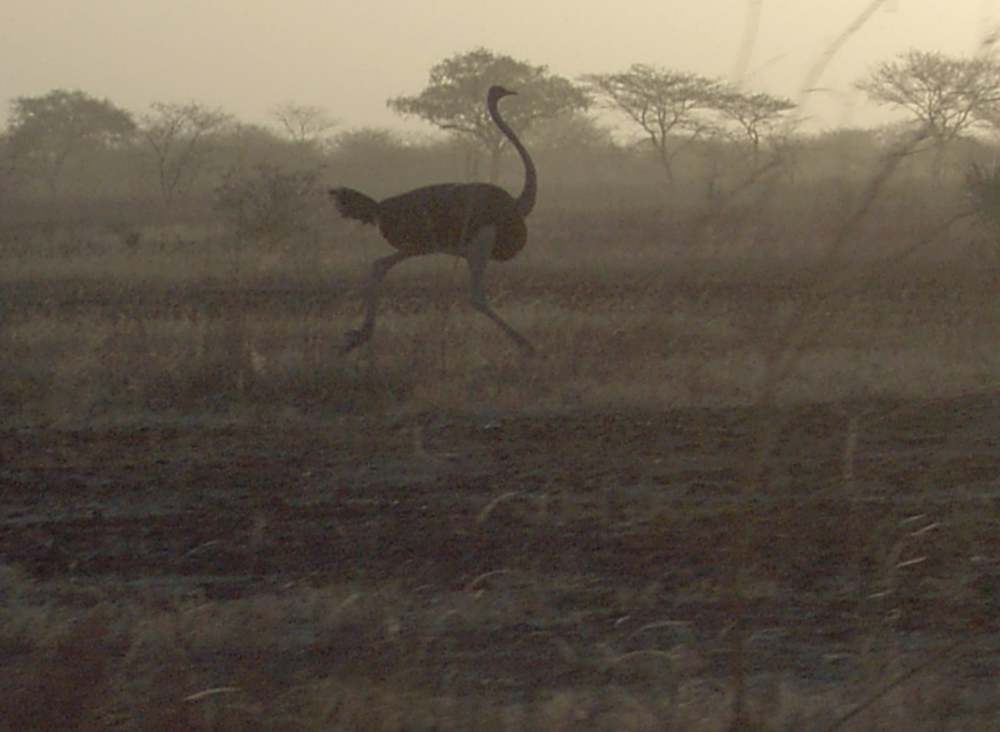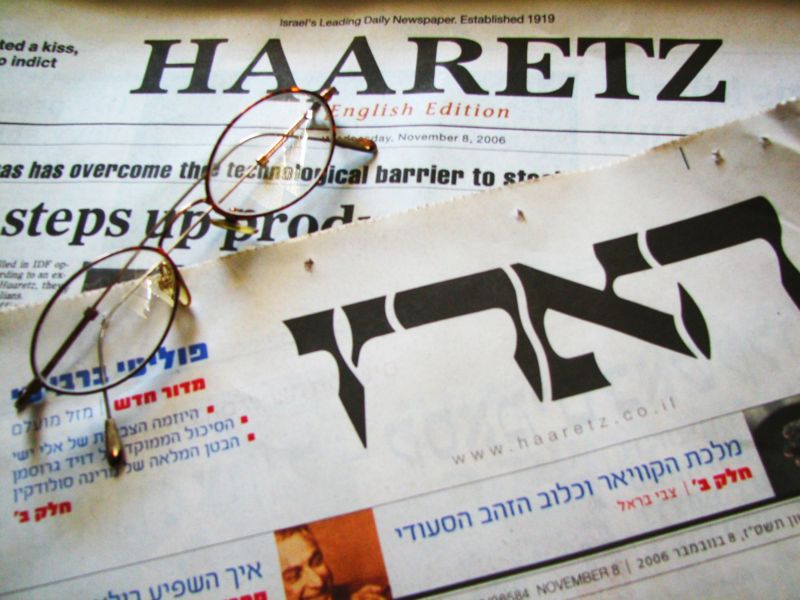|
Arabian Ostrich
The Arabian ostrich (''Struthio camelus syriacus''), Syrian ostrich, or Middle Eastern ostrich is an extinct subspecies of the ostrich that lived on the Arabian Peninsula and in the Near East until the mid-20th century. Distribution The Arabian ostrich's range seems to have been continuous in prehistoric times, but with the drying-up of the Arabian Peninsula, it disappeared from the inhospitable areas of the Arabian Desert, such as the Rub' al Khali. In historic times, the bird seems to have occurred in two discrete relict populations: a smaller one in the southeast of the Arabian Peninsula and a larger one in the area where today the borders of Saudi Arabia, Jordan, Iraq and Syria meet. Once common in the Negev, ostriches became extinct in the region in the 1920s as a result of widespread hunting. It was also present in Qatar, the United Arab Emirates (in prehistoric times), Oman, and Kuwait. Eggshells of Arabian ostriches have been found on Bahrain, though this is likely n ... [...More Info...] [...Related Items...] OR: [Wikipedia] [Google] [Baidu] |
Al-Jahiz
Abu Uthman Amr ibn Bahr al-Kinani al-Basri (; ), commonly known as al-Jahiz (), was an Arab polymath and author of works of literature (including theory and criticism), theology, zoology, philosophy, grammar, dialectics, rhetoric, philology, linguistics, and politico-religious polemics. His extensive zoological work has been credited with describing principles related to natural selection, ethology, and the functions of an ecosystem. Ibn al-Nadim lists nearly 140 titles attributed to al-Jahiz, of which 75 are extant. The best known are ''Kitāb al-Ḥayawān'' (The Book of Animals), a seven-part compendium on an array of subjects with animals as their point of departure; ''Kitāb al-Bayān wa-l-tabyīn'' (The Book of Eloquence and Exposition), a wide-ranging work on human communication; and ''Kitāb al-Bukhalāʾ'' (The Book of Misers), a collection of anecdotes on stinginess. Tradition claims that he was smothered to death when a vast amount of books fell over him. Life The a ... [...More Info...] [...Related Items...] OR: [Wikipedia] [Google] [Baidu] |
Ostrich Egg
The egg of the ostrich (genus ''Struthio'') is the largest of any living bird (being exceeded in size by those of the extinct elephant bird genus '' Aepyornis''). The shell has a long history of use by humans as a container and for decorative artwork, including beads. The eggs are not commonly eaten. Biology The female common ostrich lays her fertilized eggs in a single communal nest, a simple pit, deep and wide, scraped in the ground by the male. The dominant female lays her eggs first, and when it is time to cover them for incubation she discards extra eggs from the weaker females, leaving about 20 in most cases. A female common ostrich can distinguish her own eggs from the others in a communal nest. Ostrich eggs are the largest of all eggs, though they are actually the smallest eggs relative to the size of the adult bird — on average they are long, wide, and weigh , over 20 times the weight of a chicken's egg and only 1 to 4% the size of the female. They are glossy c ... [...More Info...] [...Related Items...] OR: [Wikipedia] [Google] [Baidu] |
Tarsus (skeleton)
In the human body, the tarsus (: tarsi) is a cluster of seven articulating bones in each foot situated between the lower end of the tibia and the fibula of the lower leg and the metatarsus. It is made up of the midfoot (Cuboid bone, cuboid, medial, intermediate, and lateral cuneiform bone, cuneiform, and navicular) and hindfoot (Talus bone, talus and calcaneus). The tarsus articulates with the bones of the metatarsus, which in turn articulate with the proximal phalanges of the toes. The joint between the tibia and fibula above and the tarsus below is referred to as the ankle, ankle joint proper. In humans the largest bone in the tarsus is the calcaneus, which is the weight-bearing bone within the heel of the foot. Human anatomy Bones The talus bone or ankle bone is connected superiorly to the two bones of the lower leg, the tibia and fibula, to form the ankle, ankle joint or talocrural joint; inferiorly, at the subtalar joint, to the calcaneus or heel bone. Together, the ... [...More Info...] [...Related Items...] OR: [Wikipedia] [Google] [Baidu] |
Intergradation
In zoology, intergradation is the way in which two distinct subspecies are connected via areas where populations are found that have the characteristics of both. There are two types of intergradation: primary and secondary intergradation. Primary intergradation This occurs in cases where two subspecies are connected via one or more intermediate populations, each of which is in turn intermediate to its adjacent populations and exhibits more or less the same amount of variability as any other population within the species. Adjacent populations and subspecies are subject to cline intergradation, and in these situations it is usually taken for granted that the clines are causally related (by natural selection) to environmental gradients.Mayr E, Ashlock PD (1991). ''Principles of Systematic Zoology''. Second edition. McGraw-Hill. . Secondary intergradation When contact between a geographically isolated subspecies is reestablished with the main body of the species or with another is ... [...More Info...] [...Related Items...] OR: [Wikipedia] [Google] [Baidu] |
North African Ostrich
The North African ostrich, red-necked ostrich, or Barbary ostrich (''Struthio camelus camelus'') is the nominate subspecies of the common ostrich from West and North Africa. It has the largest average size among the subspecies of ostriches, making it the largest living bird. Evolutionary history In the 1990s, mtDNA analyses control region haplotypes revealed that the Arabian ostrich from Western Asia is closely related to the North African ostrich. In 2017, the Birbal Sahni Institute of Palaeobotany discovered that common ostriches used to live in India about 25,000 years ago. DNA research on eleven fossilised eggshells from eight archaeological sites in the states of Rajasthan, Gujarat and Madhya Pradesh found 92% genetic similarity between the eggshells and the North African ostrich. Description The North African ostrich is the largest subspecies of ''S. camelus'', at in height and up to in weight. The neck is pinkish-red, the plumage of males is black and white, and the ... [...More Info...] [...Related Items...] OR: [Wikipedia] [Google] [Baidu] |
MtDNA
Mitochondrial DNA (mtDNA and mDNA) is the DNA located in the mitochondria organelles in a eukaryotic cell that converts chemical energy from food into adenosine triphosphate (ATP). Mitochondrial DNA is a small portion of the DNA contained in a eukaryotic cell; most of the DNA is in the cell nucleus, and, in plants and algae, the DNA also is found in plastids, such as chloroplasts. Mitochondrial DNA is responsible for coding of 13 essential subunits of the complex oxidative phosphorylation (OXPHOS) system which has a role in cellular energy conversion. Human mitochondrial DNA was the first significant part of the human genome to be sequenced. This sequencing revealed that human mtDNA has 16,569 base pairs and encodes 13 proteins. As in other vertebrates, the human mitochondrial genetic code differs slightly from nuclear DNA. Since animal mtDNA evolves faster than nuclear genetic markers, it represents a mainstay of phylogenetics and evolutionary biology. It also permits tra ... [...More Info...] [...Related Items...] OR: [Wikipedia] [Google] [Baidu] |
Bahrain
Bahrain, officially the Kingdom of Bahrain, is an island country in West Asia. Situated on the Persian Gulf, it comprises a small archipelago of 50 natural islands and an additional 33 artificial islands, centered on Bahrain Island, which makes up around 83 percent of the country's landmass. Bahrain is situated between Qatar and the northeastern coast of Saudi Arabia, to which it is connected by the King Fahd Causeway. The population of Bahrain is 1,501,635 as of 14 May 2023, of whom 712,362 (47.44%) are Bahraini nationals and 789,273 are expatriates spanning 2,000 ethnicities (52.56% of the country's population of 1,501,635). Bahrain spans some , and is the List of countries and dependencies by area, third-smallest nation in Asia after the Maldives and Singapore. The capital and largest city is Manama. According to archeologist Geoffrey Bibby, Bahrain is the site of the ancient Dilmun civilization. though locally the islands were controlled by the Shia Jarwanids, Jarwanid dyn ... [...More Info...] [...Related Items...] OR: [Wikipedia] [Google] [Baidu] |
Kuwait
Kuwait, officially the State of Kuwait, is a country in West Asia and the geopolitical region known as the Middle East. It is situated in the northern edge of the Arabian Peninsula at the head of the Persian Gulf, bordering Iraq to Iraq–Kuwait border, the north and Saudi Arabia to Kuwait–Saudi Arabia border, the south. With a coastline of approximately , Kuwait also shares a maritime border with Iran, across the Persian Gulf. Kuwait is a city-state, most of the country's population reside in the urban area, urban agglomeration of Kuwait City, the capital and largest city. , Kuwait has a population of 4.82 million, of which 1.53 million are Kuwaiti nationality law, Kuwaiti citizens while the remaining 3.29 million are Expatriates in Kuwait, foreign nationals from over 100 countries. Kuwait has the world's third List of sovereign states by immigrant and emigrant population, largest number of foreign nationals as a percentage of the population, where its citizens make up less th ... [...More Info...] [...Related Items...] OR: [Wikipedia] [Google] [Baidu] |
Oman
Oman, officially the Sultanate of Oman, is a country located on the southeastern coast of the Arabian Peninsula in West Asia and the Middle East. It shares land borders with Saudi Arabia, the United Arab Emirates, and Yemen. Oman’s coastline faces the Arabian Sea to the southeast and the Gulf of Oman on the northeast. The exclaves of Madha and Musandam Governorate, Musandam are surrounded by the United Arab Emirates on their land borders, while Musandam’s coastal boundaries are formed by the Strait of Hormuz and the Gulf of Oman. The capital and largest city is Muscat. With a population of approximately 5.46 million and an area of 309,500 km2 (119,500 sq mi), Oman is the Countries with highest population, 123rd most-populous country. From the 18th century, the Omani Sultanate was Omani Empire, an empire, competing with the Portuguese Empire, Portuguese and British Empire, British empires for influence in the Persian Gulf and the Indian Ocean. At its peak in the 19th ce ... [...More Info...] [...Related Items...] OR: [Wikipedia] [Google] [Baidu] |
United Arab Emirates
The United Arab Emirates (UAE), or simply the Emirates, is a country in West Asia, in the Middle East, at the eastern end of the Arabian Peninsula. It is a Federal monarchy, federal elective monarchy made up of Emirates of the United Arab Emirates, seven emirates, with Abu Dhabi serving as its capital. It shares land borders with Oman to the east and northeast, and with Saudi Arabia to the southwest; as well as maritime borders in the Persian Gulf with Qatar and Iran, and with Oman in the Gulf of Oman. , the UAE has an estimated population of over 10 million, of which 11% are Emiratis; Dubai is List of cities in the United Arab Emirates, its most populous city and is an international hub. Islam is the State religion, official religion and Arabic is the official language, while English is the most spoken language and the language of business. The United Arab Emirates Oil reserves in the United Arab Emirates, oil and natural gas reserves are the world's List of countries by pr ... [...More Info...] [...Related Items...] OR: [Wikipedia] [Google] [Baidu] |
Qatar
Qatar, officially the State of Qatar, is a country in West Asia. It occupies the Geography of Qatar, Qatar Peninsula on the northeastern coast of the Arabian Peninsula in the Middle East; it shares Qatar–Saudi Arabia border, its sole land border with Saudi Arabia to the south, with the rest of its territory surrounded by the Persian Gulf. The Gulf of Bahrain, an inlet of the Persian Gulf, separates Qatar from nearby Bahrain. The capital is Doha, home to over 80% of the country's inhabitants. Most of the land area is made up of flat, low-lying desert. Qatar has been ruled as a hereditary monarchy by the House of Thani since Mohammed bin Thani signed an agreement with Britain in 1868 that recognised its separate status. Following Ottoman Empire, Ottoman rule, Qatar became a British protectorate in 1916 and gained independence in 1971. The current emir is Tamim bin Hamad Al Thani, who holds nearly all executive, legislative, and judicial authority in an autocratic manner under ... [...More Info...] [...Related Items...] OR: [Wikipedia] [Google] [Baidu] |
Haaretz
''Haaretz'' (; originally ''Ḥadshot Haaretz'' – , , ) is an List of newspapers in Israel, Israeli newspaper. It was founded in 1918, making it the longest running newspaper currently in print in Israel. The paper is published in Hebrew language, Hebrew and English language, English in the Berliner (format), Berliner format, and is also available online. In North America, it is published as a weekly newspaper, combining articles from the Friday edition with a roundup from the rest of the week. ''Haaretz'' is Israel's newspaper of record. It is known for its Left-wing politics, left-wing and Liberalism in Israel, liberal stances on domestic and foreign issues. ''Haaretz'' has the third-largest Print circulation, circulation in Israel. It is widely read by international observers, especially in its English edition, and discussed in the international press. According to the Center for Research Libraries, among Israel's daily newspapers, "''Haaretz'' is considered the most infl ... [...More Info...] [...Related Items...] OR: [Wikipedia] [Google] [Baidu] |






